It was easily the most dangerous fishing I had ever done. Large Pacific swells crashed against the rocks. Farther offshore those swells were no big deal – just a gentle rise and fall. Inshore, waves rebounding off the cliffs combined with incoming swells created unpredictable, turbulent seas. The trick was to get my kayak close enough to cast a popper among the rocks while staying far enough away that a rogue wave wouldn’t wash me into the impact zone.
It took two days to get to this point. It started when Doug Olander and I boarded a plane at the Orlando International Airport. After a layover in Miami, we eventually landed in Panama City where we met the rest of our crew, Glenn Hughes, Rob Southwick, Brad Gentner and Jimmy Fee. At 4 am the next morning, Roque from Panama Kayak Adventures met us in the lobby of our hotel. We loaded up our gear and started the long drive on the pothole filled roads of Panama to the coast north and west of Panama City.
By early afternoon we reached the end of the road, a little coastal resort town called Los Buzos. From there we boarded pangas and motored another hour west to a remote stretch of coastline in Cerro Hoya National Park.
Our final destination was the Tembladera Fishing Lodge, our home for the next six days. If you are looking for luxury accommodations with swimming pools and tiki bars, then Tembladera is not for you. The lodge consisted of three small two bed cabins made from trees and driftwood that washed up on the beach. There’s no air conditioning. Minimal electricity came from solar cells and batteries. Water came from a spring up the hill, and bathrooms were outhouse style with five gallon buckets and sawdust.
There is a satisfaction that comes from fishing trips where the fish are big, plentiful, aggressive and you catch a bunch. Then there is satisfaction when the conditions are all wrong, yet you grind it out and manage to catch a few quality fish. This trip was more of the latter. Gentner and Olander, both multi-trip veterans here, said this was their worst trip, yet we still landed quality fish every day and I notched several new species on my life list.
A normal day with Panama Kayak Adventures goes something like this. Everyone gathers in the camp’s dining building around first light for breakfast. After that, kayaks, gear, anglers and crew load into two pangas and cruise out to wherever the fishing destination is for the day. Kayaks and anglers are deployed, and then the crew searches around with their fish finders to pinpoint seamounts and other deep structures that are stacked up with big fish. They drop a buoy on said targets. Kayak anglers leisurely fish around the buoys in the gentle currents and light winds. While the kayakers do their thing, the panga crew sabikis up blue runners and skipjack from the plentiful baitfish schools for anyone who wants to slow troll a livie behind their kayak. After five or so hours of fishing, the pangas deliver everyone to a protected, secluded beach somewhere for lunch and an afternoon siesta. Then it’s off for more fishing until the pangas have to haul you back to camp for dinner of whatever fresh fish was caught that day.
That’s how it is supposed to work out. We faced abnormally strong currents and winds that usually blew at whitecaps levels. And those plentiful baitfish schools had disappeared. No one knows for sure why. El Nino perhaps? There was no leisurely fishing here. The game plan was to assess the direction of drift, peddle upcurrent/upwind, deploy lures to fish as you drifted past the buoy and repeat. There was a lot more peddling and maneuvering than fishing.
Day one was my worst day of fishing, but also when the team’s biggest hookup of the trip happened. It started out on an exciting note when I spotted a large shadow 50 feet from my kayak. A long, black sickle tail broke the water revealing it to be a huge black marlin, the first I’d ever seen. Well, it wasn’t huge by marlin standards, only 300 – 400 pounds, but still an awfully impressive sight to see from the seat of a kayak.
That marlin was a harbinger of things to come. Hughes was slow trolling a blue runner, one of the rare baits the sabiki crew managed to collect. Normally a live bait like that doesn’t last long, but Hughes had been trolling it for almost two hours before I heard his rod take off. I looked over just in time to see a marlin launch from the water, perhaps the same one I saw earlier that day. Hughes’ tackle was cubera and roosterfish stout, not marlin stout, but it held for a while. I peddled as best I could to keep up and watch the show. That marlin gave Hughes an epic Nantucket sleigh ride. I’ve never seen a kayak move that fast. We got to see that marlin clear the water a couple more times before the leader parted.
By lunch I had a thorough skunking going on. The entire crew hadn’t caught much, just a few football tuna I think. After lunch I gave up on the offshore routine and peddled in to fish the rocks. Admittedly I was too timid that day, still trying to get a feel for how the Hobie Compass kayak handled in rough water. I stayed too far away and most of my casts fell short of the sweet spot near the rocks. Fishing was tough and slow and I only managed one fish, a chunky Pacific crevalle jack on a Rapala X-Rap Magnum Stick Bait. Normally crevalles are plentiful and can be a nuisance when targeting roosterfish and trevally. As an example of how odd our trip was, that was the only crevalle caught by the whole crew the entire week. I also learned Pacific crevalles are genetically different than their Atlantic cousins, so technically a new species for me.
The morning of day two I was committed to fish the offshore buoy hard. Like the previous day, it was a lot more peddling than fishing. I only got two bites on my Williamson Vortex Jig, but I managed to catch both, and both were new species for me. The first was a sierra mackerel that probably weighed in the low teens. I was told that was pretty big for a sierra. The second was a 20 pound yellowfin tuna, my first tuna from a kayak and my first yellowfin.
After a day and a half into the vacation I finally got comfortable with how the Hobie handled in rough water. For most of the rest of the trip I fished in close around the rocks and cliffs. I preferred it over the open water fishing. I love breaking down a shoreline to figuring out the fishy nooks and crannies and then casting a lure into those spots. The added challenge was almost every fish you hooked would charge straight back to the rocks and could easy drag you with them. While casting I’d keep my kayak parallel to shore. Upon a hookup, I’d hold on tight to the rod, crank the rudder hard to open ocean and peddle like mad until I reached a safe distance from the danger zone.
My lures for plugging the rocks where Ocean Born Flying Pencils and Flying Poppers. Fishing wasn’t fast with some long dry spells, but hits came often enough to keep me engaged. Sometimes explosive strikes turned into freight trains that couldn’t be stopped and I lost a few of my Ocean Born plugs. Roosterfish proved to be the most frustrating and exciting. They would charge up behind the lure, often with their signature dorsal fins breaking the surface, only to veer off at the last second.
My topwater fishing primarily produced bigeye trevally and the beautiful bluefin trevally. Monster houndfish and small mullet snapper also fell for the plugs, and I finally got a good eat and caught a roosterfish.
Fishing those big topwaters was tiring so I’d take a break by dropping a Crippled Herring spoon or Nikko Winnow paddletail to the bottom on a light spinning rod. The near shore bottom was loaded with small fish, mostly snapper and grouper, that would readily grab my lures. Action was usually fast, although the catch seldom topped five pounds. I added several new species to my catch list including yellow snapper, pargo and starry grouper.
Every day was exhausting and the week went by way too fast. I’ll forever have memories of explosive strikes and screaming runs among the background roar of crashing surf. Gentner caught the biggest fish of the trip, an amberjack in the 30 pound range. Hughes had the most impressive catch, the only cubera of the trip. Despite the rough conditions and “poor” fishing, I am anxious to return.
For those interested in hardcore kayak fishing in a remote, rustic area, check out panamakayakadventure.com. If you want more luxury in your accommodations, there are nice hotels and restaurants, along with kayak fishing outfitters in Los Buzos.

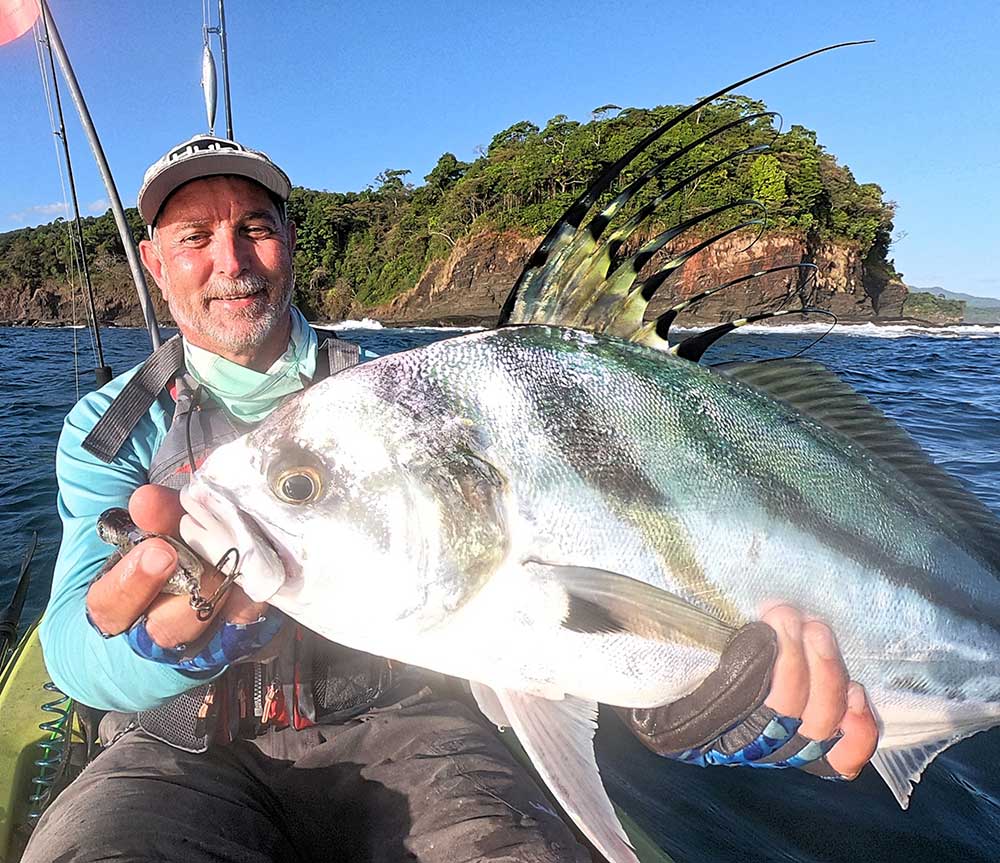
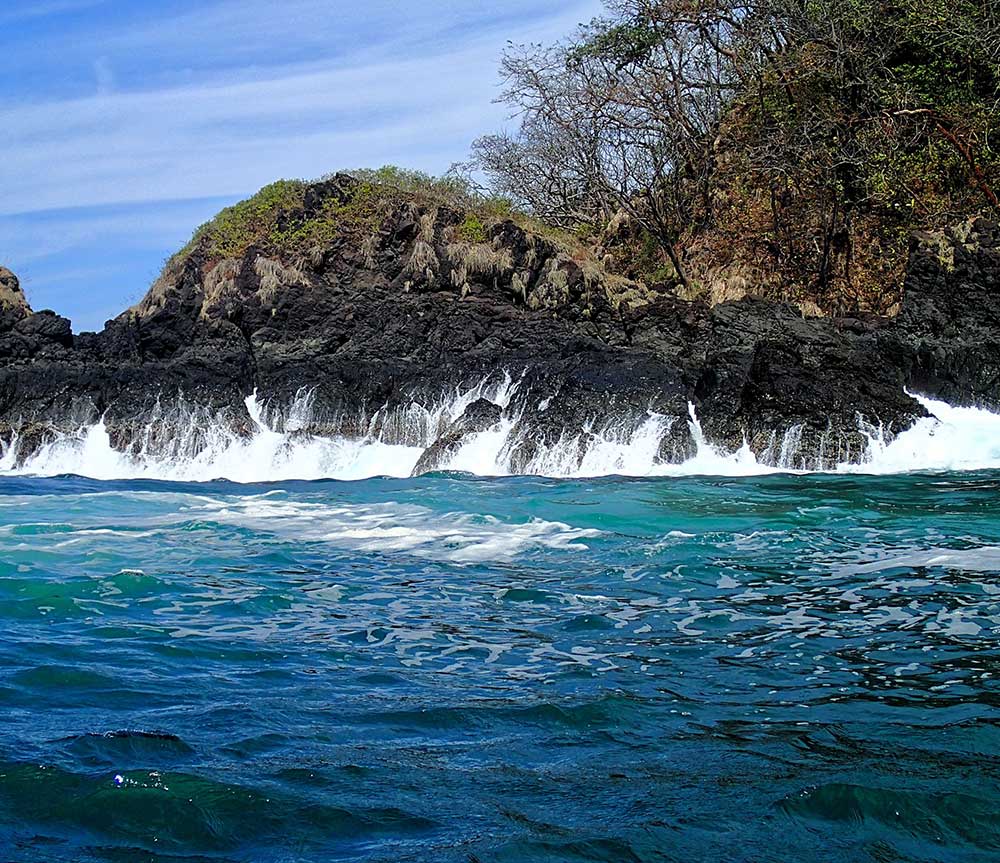
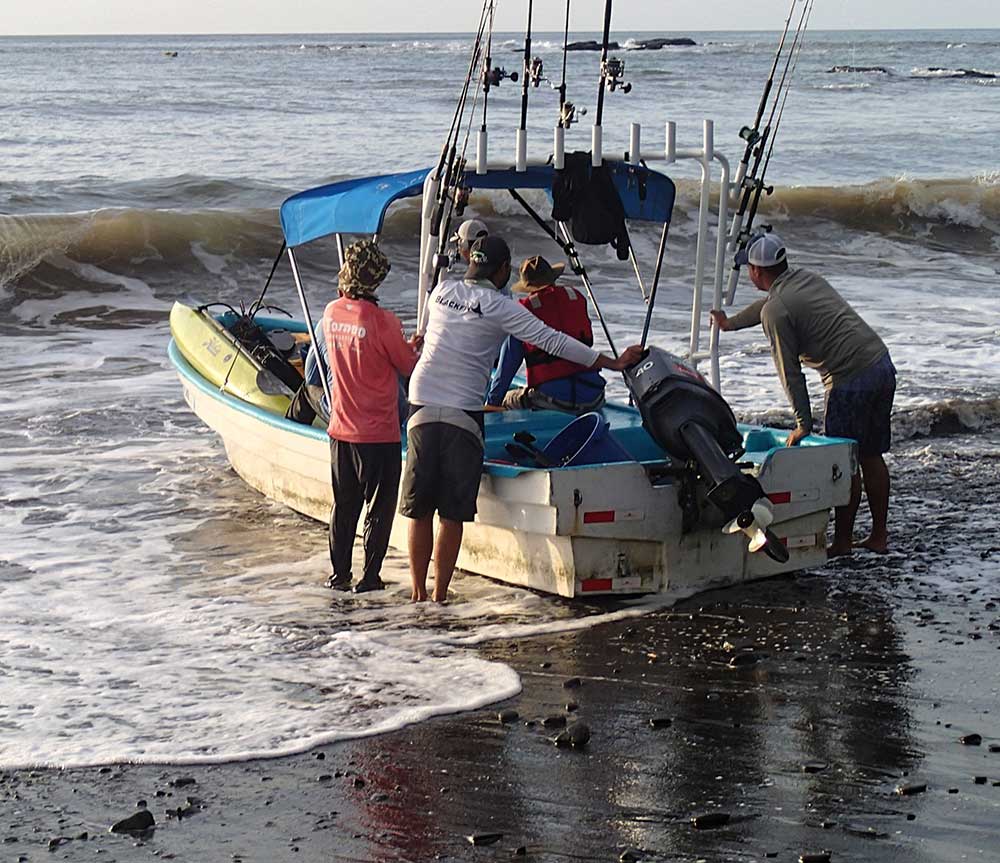

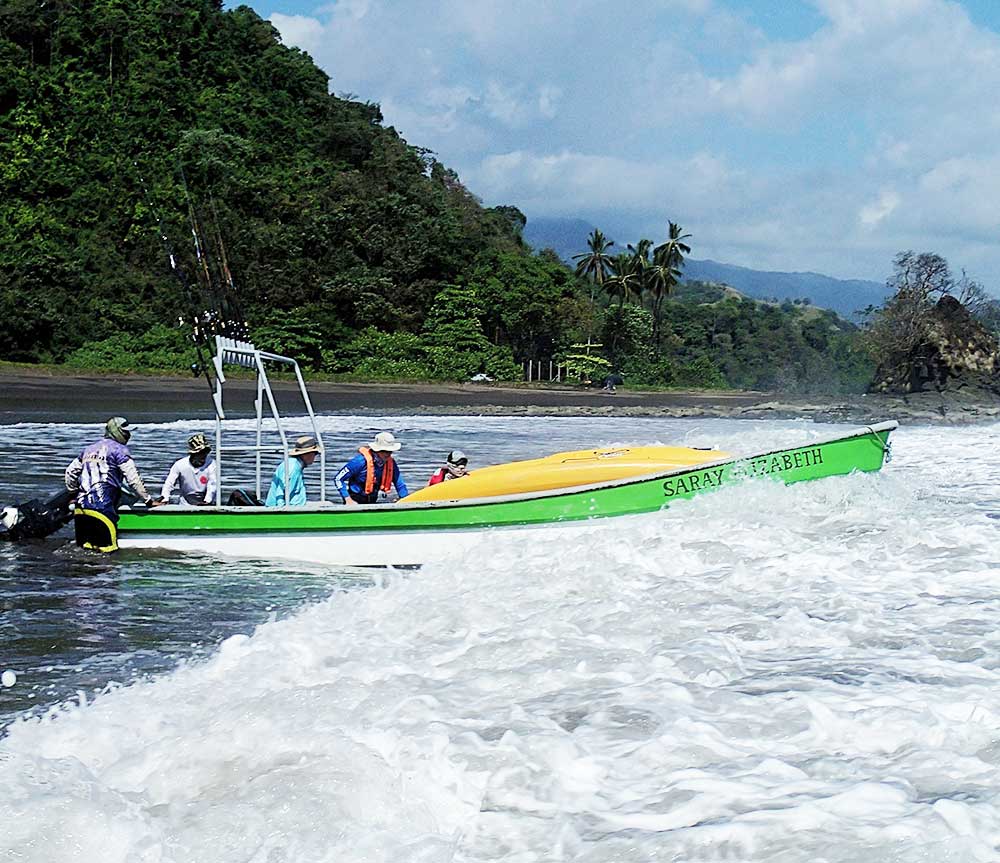
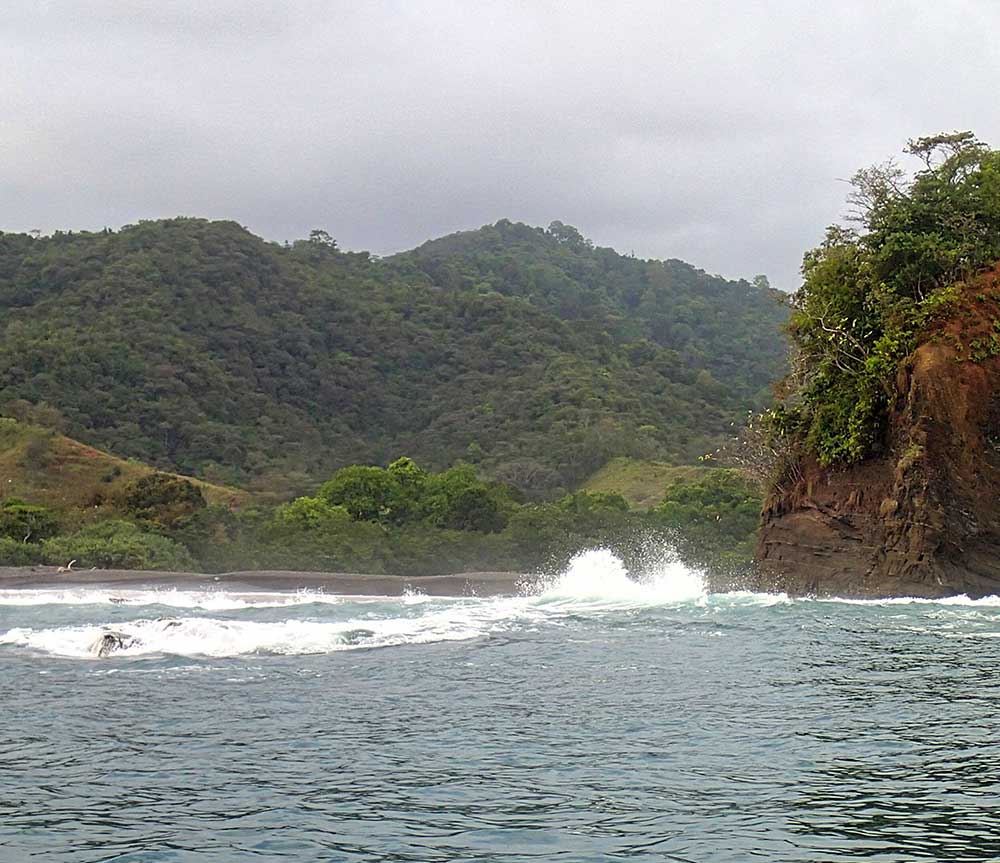
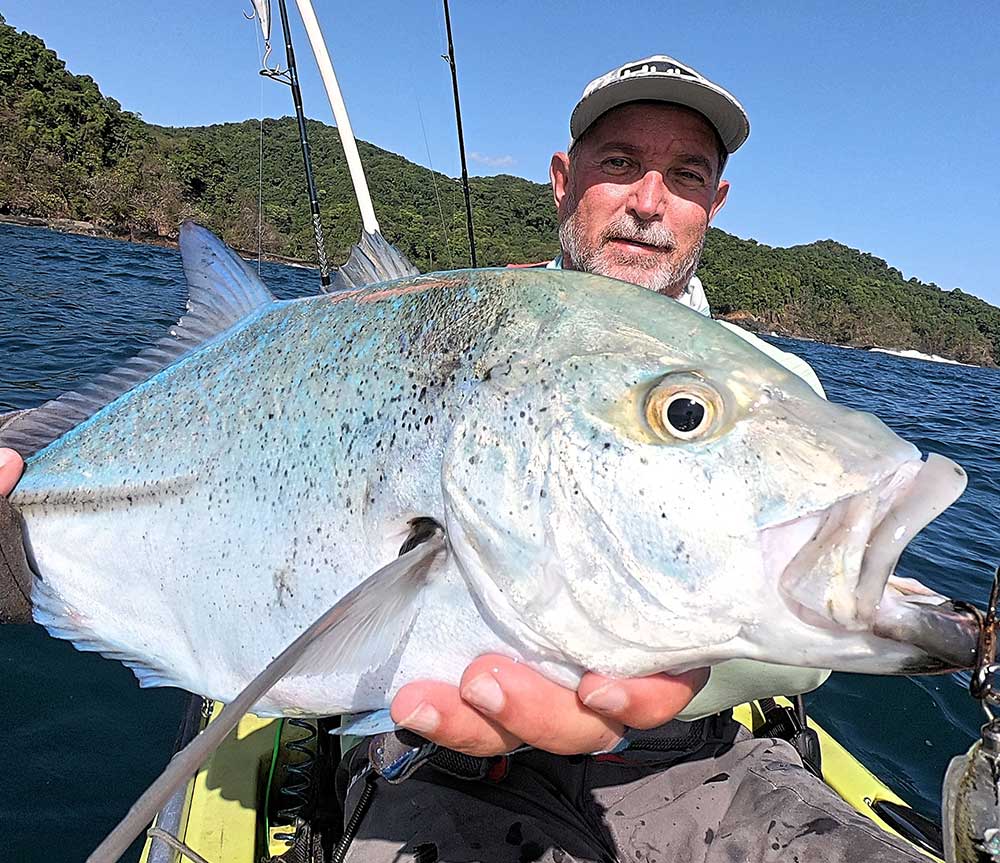
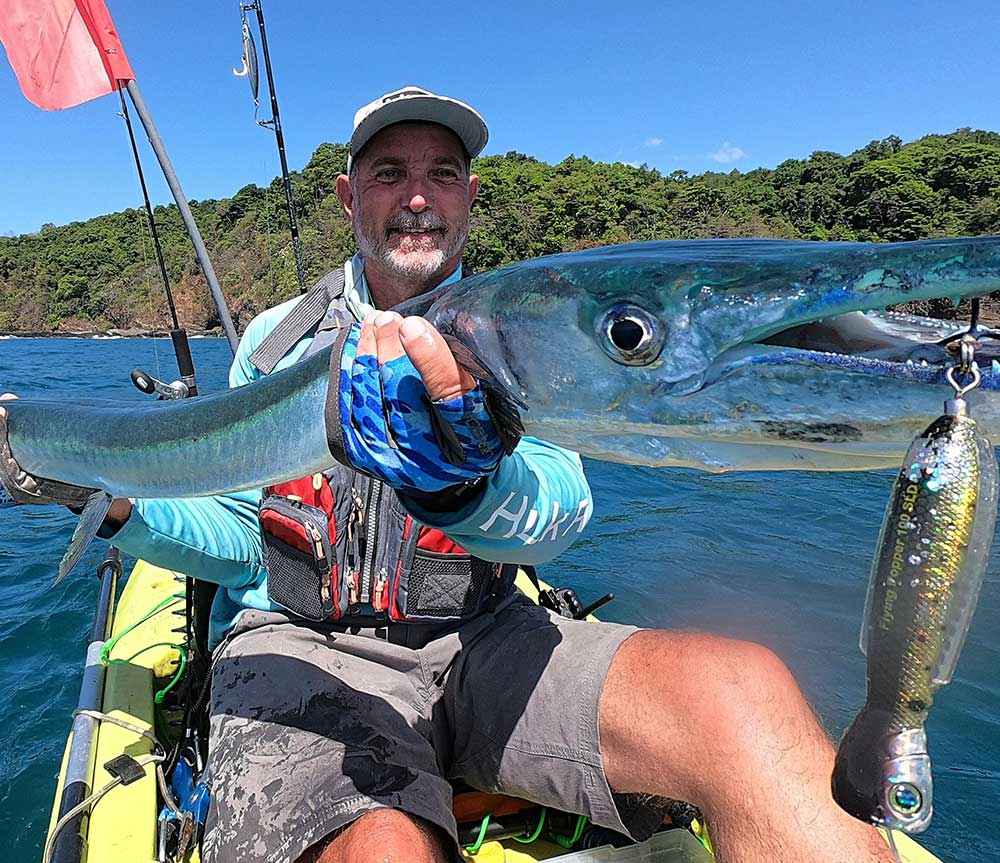

Leave A Comment
You must be logged in to post a comment.